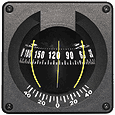How to value an aircraft
I personally use the Aircraft Value Reference Guide when I want to value an aircraft
I like the different options that Value Reference Guide has available. These options include airframe hours, engine hours, airframe and avionics options, features and condition. There is also a market range given for that special, once in a lifetime, perfect aircraft. These extras allow the price to be adjusted for all the factors that you can think of. BUT, it also makes the price more subjective than other price guides.
The price guides are just that, price guides. Not actual value. Of course the underwriters follow these guides. Let me give you another example. I had an owner buy a small, four place single. The base book value was $30,000. The owner financed $20,000 and insured the aircraft for $25,000. A few months later the owner installed a new engine and borrowed money to cover the cost. The additional amount was $15,000. This made the loaned value $35,000. Underwriting refused. I asked “why?” They stated because Blue Book was $30,000 and they won’t increase without POV. We provided proof. They said they would not cover labor, just parts value. I went to the manager and requested the increase again, denied. I asked “Why?” They again said Book value.
To make a long story short, I pulled my price book and used the base price and added the engine hours of a new engine and passed the requested amount. Finally, they agreed. They weren’t even adding for the engine. The point, they use the book but they don’t always add for extras. Make sure your agent has the ability to establish a good value and support it.
On a side note, if you owe money, the borrowed amount needs to be at least 10% less than the insured value. (Owe $36,000; insure the aircraft for at least $40,000.)
Besides book values, you can use the trade papers to get current advertised prices. These won’t guarantee the values, but the ads will help you stay within the market range.
How do you roughly evaluate an aircraft? Remember these are just estimates, no books, and just rough numbers!!! Don’t call me and complain. After I’ve said that — take the base value and add or subtract for airframe time. Light singles are worth about $4 an hour. Figure about 200 hours a year since manufacturer. Trainers are worth more per year along with charter type aircraft. Anything over that amount, deduct. Under, add to the base.
What is the base value? What is it currently insured for? What did you pay? Guidelines? You should be able to find a 60’s era, four place, single for around $30,000. Older will be slightly cheaper. You don’t find many four place aircraft priced or booked at less than $20,000. Use the classifieds to help get a basic price.
For engine hours use 50% of the TBO. Figure about $10 per hour for smaller 4 cylinder engines. Avionics and extras are based on about 50% of the original value. Paint and interior can be worth about $8,000 (each) for a four place single. Compare to the trade papers
That’s it, the basics. You can always add for one owner, no damage, all logs, etc. But those are extras that are somewhat subjective. For a more accurate value, contact someone with a book! Remember this is just a rough guideline.



